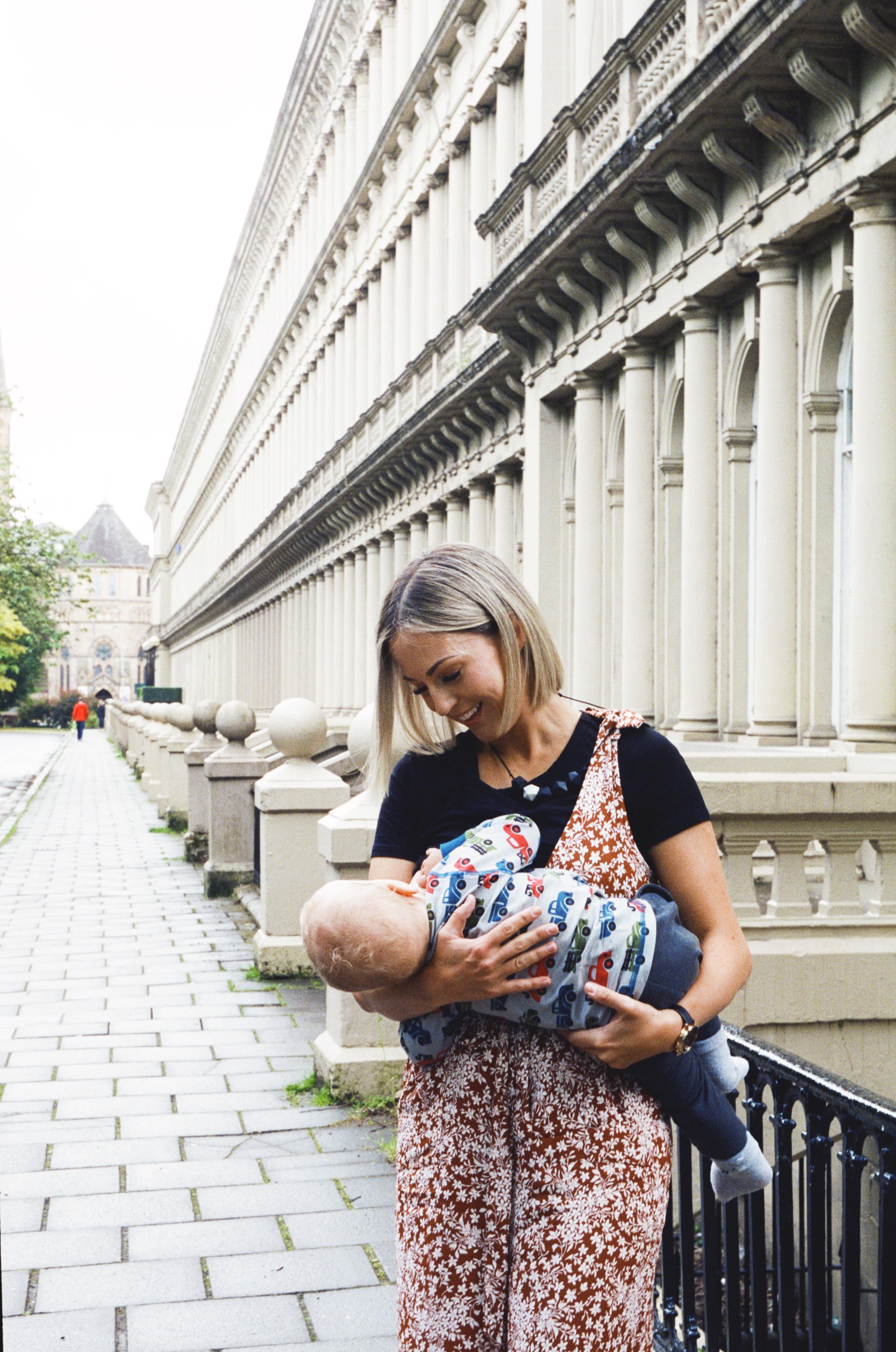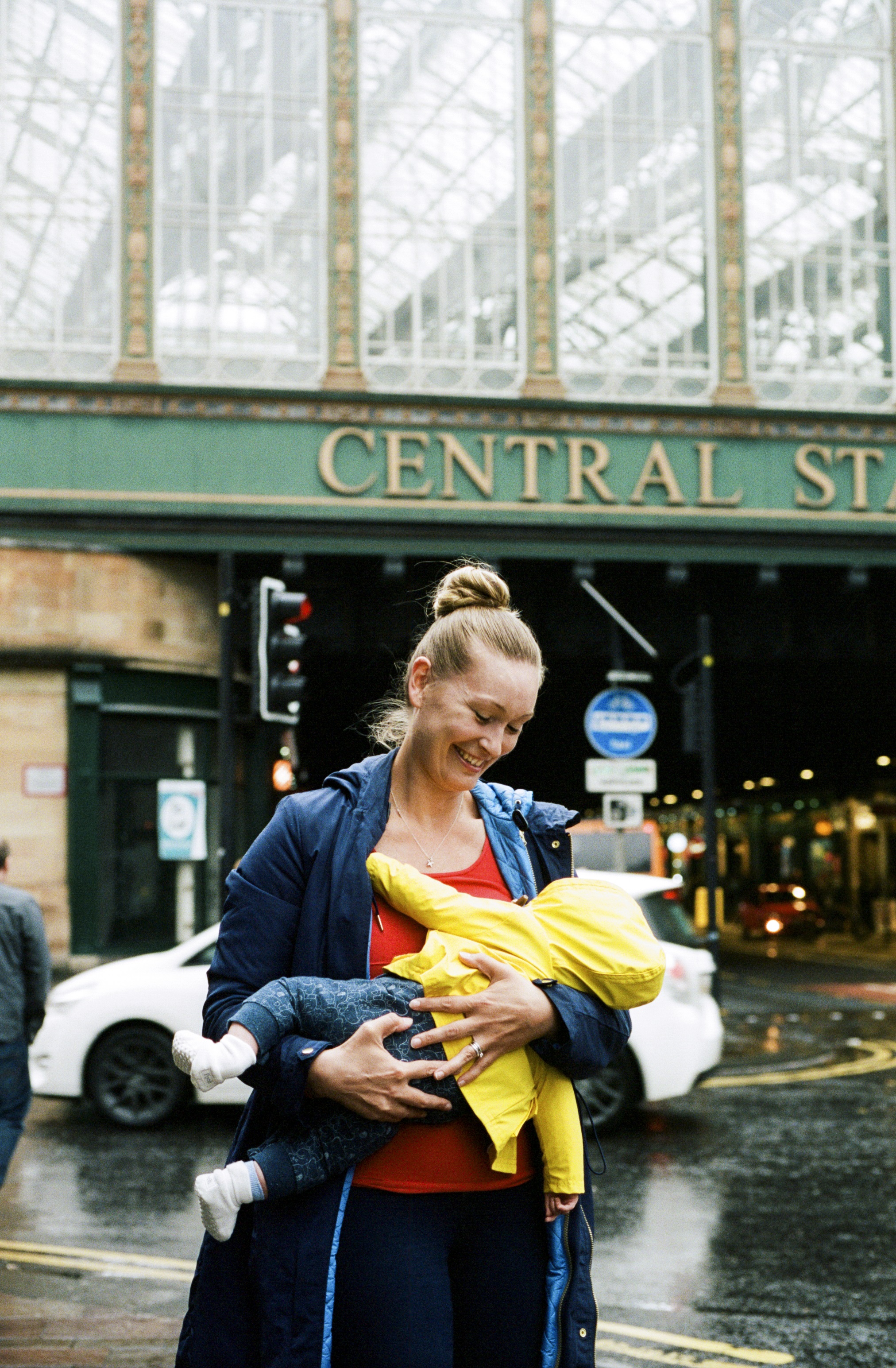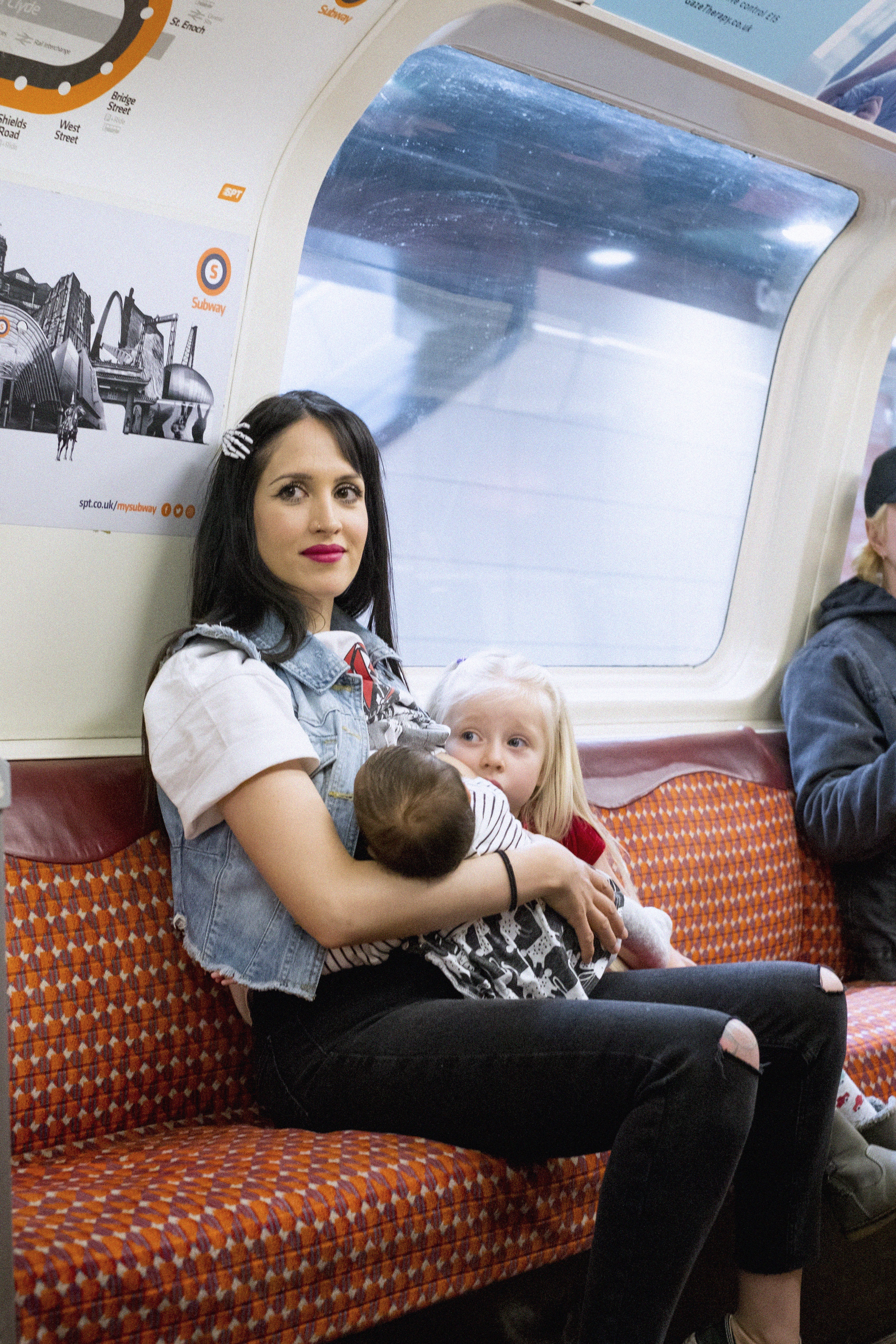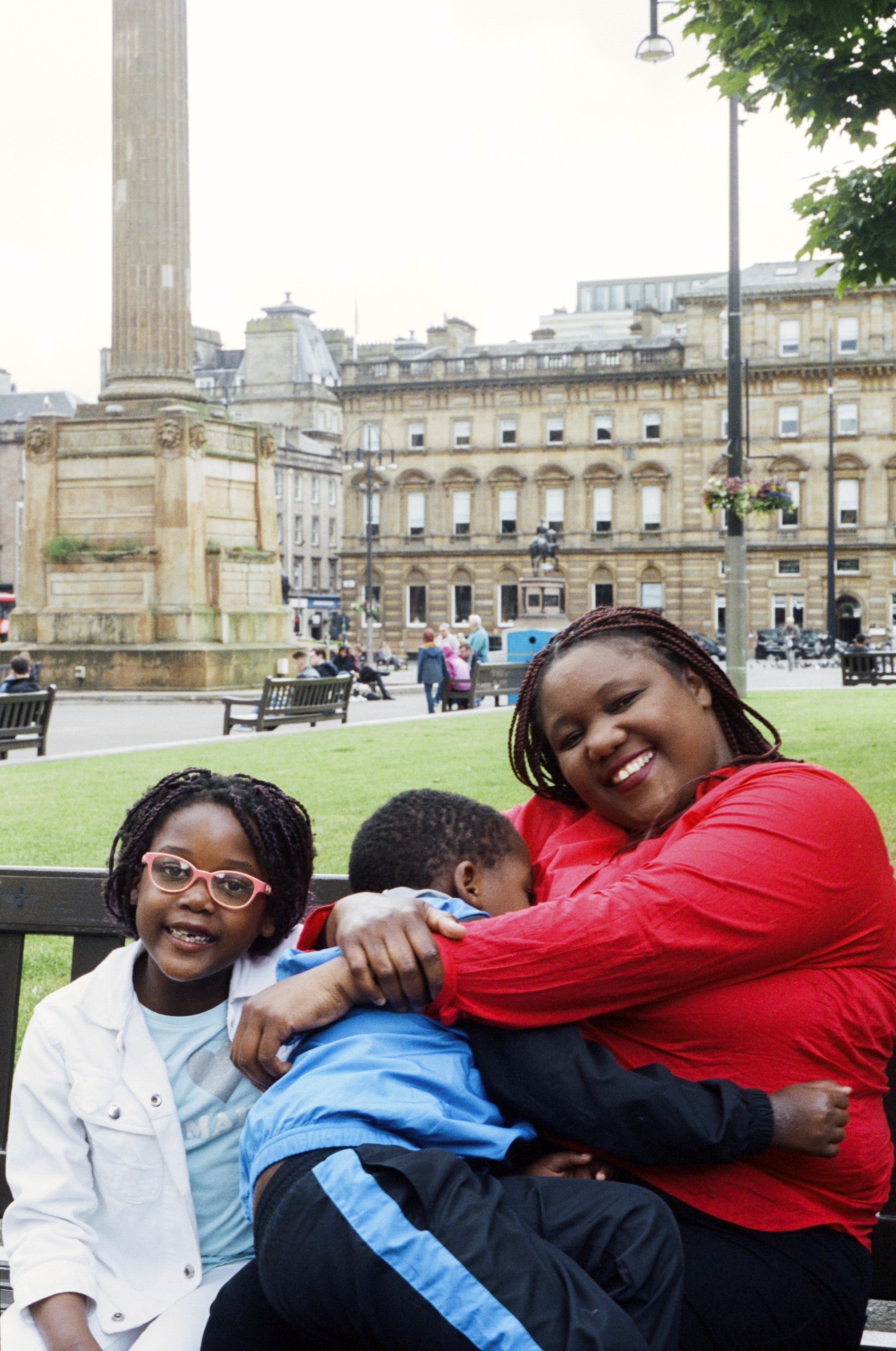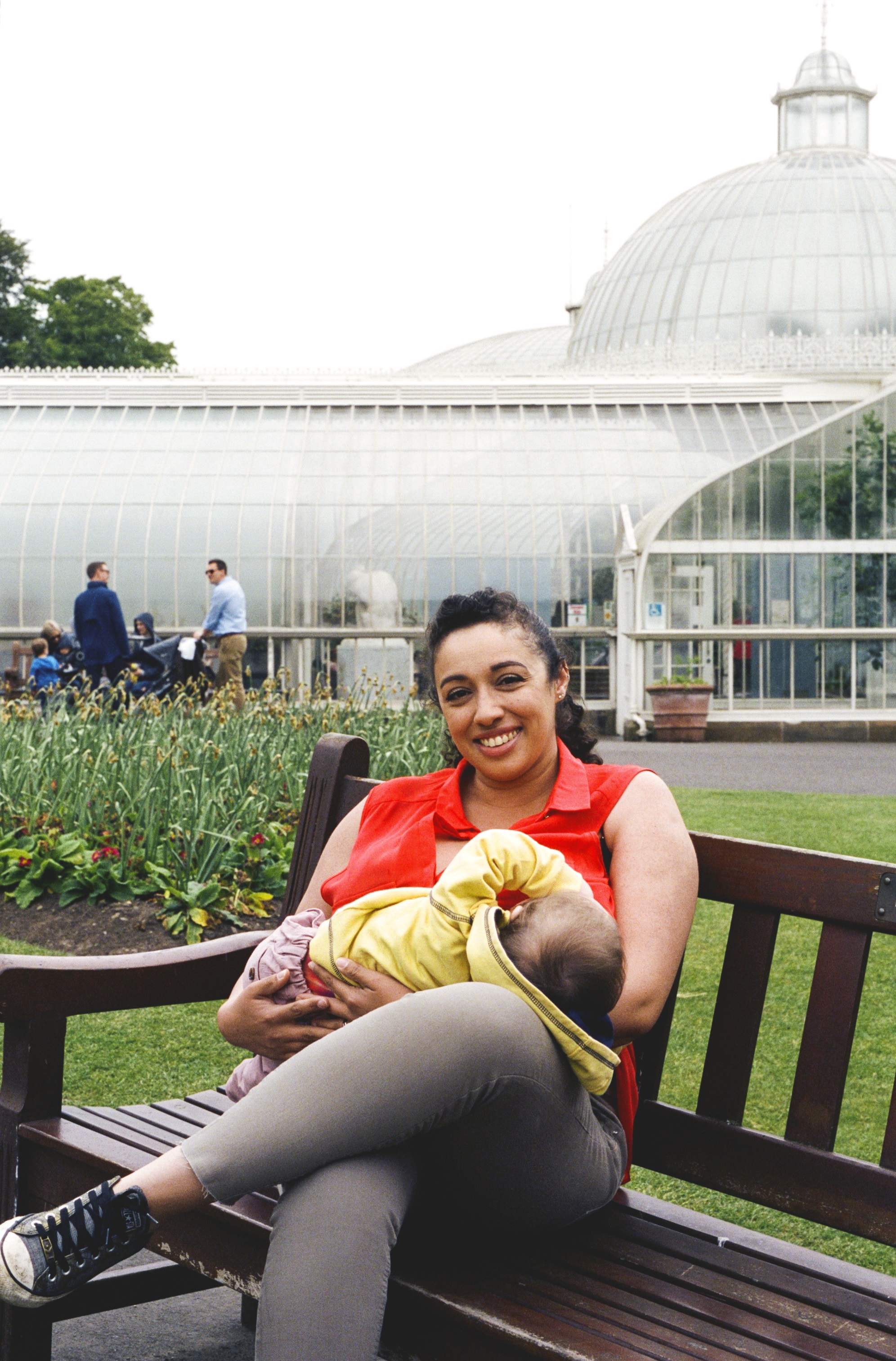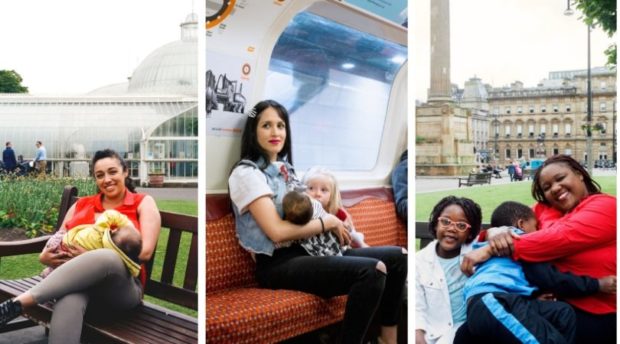
They say you can’t be what you can’t see.
And for new mums across Scotland, experts say the lack of a positive visual or media representation of breastfeeding in public has led to a huge number feeling uncomfortable about feeding their babies outside the home.
Even though it’s been illegal in Scotland for over a decade to prevent children under two being breastfed in a public place, over a quarter of new mums surveyed in the Scottish Maternal and Infant Nutrition Survey last year said they felt or had been made to feel uncomfortable while breastfeeding in public.
But thanks to a new visual nationwide breastfeeding campaign, things could be about to shift for the better.
#FeedOn, pioneered by the Association of Breastfeeding Mothers (ABM), and RȦN Studio in London is a new social awareness campaign, photographing over 40 mothers across the UK breastfeeding freely at landmark spots as well as a documentary highlighting the mothers’ experiences.
It follows on from the hugely successful #FeedMe, a sister photography campaign which ran last year in London.
In celebration of the 40th anniversary of the ABM, organisers wanted to showcase breastfeeding mothers on a wider scale, including north of the border.
In Scotland, five mothers from different backgrounds have been photographed in Glasgow, breastfeeding at a number of well-known public locations, including Central Station, the Botanic Gardens, George Square, Great Western Road and in an underground subway carriage.
The campaign, which coincides with National Breastfeeding Week (until June 26) aims to normalise breastfeeding in public by using widespread visual means, and to combat the negative connotations often surrounding breastfeeding in popular culture.
Chair of the ABM, Emma Pickett, was one of the key organisers of the campaign and believes imagery is one of the best ways to change people’s opinions and mindsets when it comes to breastfeeding in public.
She said: “When people currently see breastfeeding in visual terms they’ll see it on TV on things like American sitcoms like Friends and breastfeeding is always the butt of a joke or shown as a bit weird and a bit yucky.
“So the messages that people are getting when they rarely do get visual messages suggest that breastfeeding isn’t normal, or that it should be hidden away for fear of being ridiculed.
“#FeedOn aims to tackle this problem head on, by showing breastfeeding mothers happily feeding their babies in public spaces and showing that it’s just as acceptable as feeding from a bottle.
“The campaign not only empowers mothers, but it also reinforces to the wider public that this is allowed and it is fine to do.
“As much as laws can protect mothers, imagery can really help install in people’s minds what’s acceptable and what isn’t. If you’re actually seeing breastfeeding mothers in public frequently on social media or on TV or in the press, it becomes normalised.”
Showing mothers from different backgrounds was very important in the campaign says Ms Pickett, as well as showing older children being breastfed.
“People often frown upon breastfeeding older children and we often hear from mums who have had comments like ‘oh are you still breastfeeding them?’ But it is perfectly normal and the benefits still continue.
“We also wanted to include breastfeeding mothers from different ethnic groups as there’s also a lack of that in the media.
“There’s a whole range of people being exhibited because not everyone does look the same while they’re breastfeeding.”
The UK has one of the lowest rates of breastfeeding mothers in the world, with 1% of babies still being breastfed exclusively at six months.
Negative attitudes to breastfeeding in public is cited as one of the main reasons for the low numbers, which, according to the ABM stems from the over sexualisation and disempowerment of women’s bodies as well as ingrained attitudes to breastfeeding passed down the generations.
#FeedOn photographer and co-founder of RAN Studio, Agatha Nitecka, says she notices a huge difference in attitudes to and the prevalence of public breastfeeding in the UK in comparison to the European continent.
“It is interesting to see the UK seems so weird about breastfeeding in public because in Europe I have never heard of it being a problem or women being told to stop doing it in public spaces. It’s quite natural, it just happens,” said Ms Nitecka, who has lived in a number of European countries.
“There were a number of mothers in the #FeedOn campaign who said that when they travel to Europe they feel completely relaxed about breastfeeding in public.
“It could be because they’re on holiday but they said they could do it whenever, wherever and nobody would bat an eyelid, but here they would be too scared.”
Public breastfeeding campaigner Vicki Leaver has experienced all too well reasons mothers may find themselves too scared to breastfeed their children in public in the UK.
“I’ve had people glare at me, tell me I’m disgusting and tell me I’m putting them off their food when I’ve been breastfeeding in public,” said the mother of two from Perthshire.
“But all of these experiences have empowered me and fuelled my passion to make a change.”
After the negativity she experienced, Vicki went on to create the Tea for Two Cafe, which invites new mums to breastfeed publicly at over 100 cafes in Scotland during National Breastfeeding week.
Like #FeedOn, Vicki also encourages imagery to continue to empower new mothers, by sharing pictures of themselves breastfeeding publicly.
“During the week itself, breastfeeding mums are encouraged to post up ‘brelfies’ – breastfeeding selfies,” she continued.
“We want to normalise breastfeeding so that mothers are able to have the freedom to feed their babies wherever they want without having to hide in public loos like I did.
“No mum, no matter how they choose to nurture their children, should be fed-shamed.”
Find out more about Tea For Two Week here.
Fiona Tarantino Poliri, 35 is a hair and makeup stylist and lives in Lenzie, Glasgow with husband Roberto, daughters Meena, 3 and Aria, 4 months.
“I’ve never had any negative experiences breastfeeding in public in Scotland but I think the media does a lot to perpetuate the idea that something bad is going to happen if you do.
“I think the lack of women breastfeeding in public spaces and breastfeeding in general here is to do with breasts being seen mainly as something for sexual gratification.
“I also think it’s a lot to do with the older generation who bottle-fed babies and taking advice from parents and grandparents who say ‘oh no bottle feeding is better,’ or perhaps were too disempowered or worried about offending people to get their breasts out to feed their own children.
“I imagine there are a lot of mothers from that older generation who feel they didn’t have much of a choice about breastfeeding either in public or at home, but I think there are still women who feel they don’t have a choice today about breastfeeding due to lack of support and funding.”
Leah Chenjerai, 39 is a full-time mum and lives in Springburn with daughter Erin, 6, and son Ethan, 4.
“I breastfeed in public quite a lot. Both men and women do sometimes give you a glance but when your child is starting to cry because they’re hungry your only thought really is feeding them, regardless of where you are.
“You will see a lot of mothers walking around with crying babies looking for a more private space to breastfeed because a lot of them don’t realise they’re well within their rights to do it in public, or they’re maybe uncomfortable doing it in front of other people.
“I have a friend who was told that she was disgusting by a member of the public when they saw her breastfeeding her baby on a bench in Glenrothes. But they were far more in the wrong than she was. We have a legal right to breastfeed our children wherever we want here in Scotland.
“That’s why this campaign is so important, because mothers need to feel like feeding their babies publicly is perfectly normal and that they are doing the right thing.”
Ella Orr, 35 is a senior pensions technician and lives in the southside of Glasgow with husband Steven and baby Oscar, eleven months.
“One of the first times I breastfed in public was in a shopping centre. I was too scared to sit on a bench and feed Oscar in front of people, so I ended up going to the nearest toilet to do it.
“While I was in there, a lady saw what I was doing and she said ‘you’re doing really well’ which was lovely and it just really helped me having someone I didn’t know being so positive about it.
“Before that point I’d been so scared about being stared at or someone saying something negative to me.
“It took a while but in the end I just forced myself to do it.
“I was advised to try it in front of the mirror as well which helped, because when you see it yourself it does just seem like a very normal thing.
“The photography being used in #FeedOn is really good for that reason, because physically seeing something like breastfeeding in public can only reinforce the fact that this is something that should be seen by everyone, and not hidden away.”
#FeedOn
Watch the documentary trailer here.

Enjoy the convenience of having The Sunday Post delivered as a digital ePaper straight to your smartphone, tablet or computer.
Subscribe for only £5.49 a month and enjoy all the benefits of the printed paper as a digital replica.
Subscribe